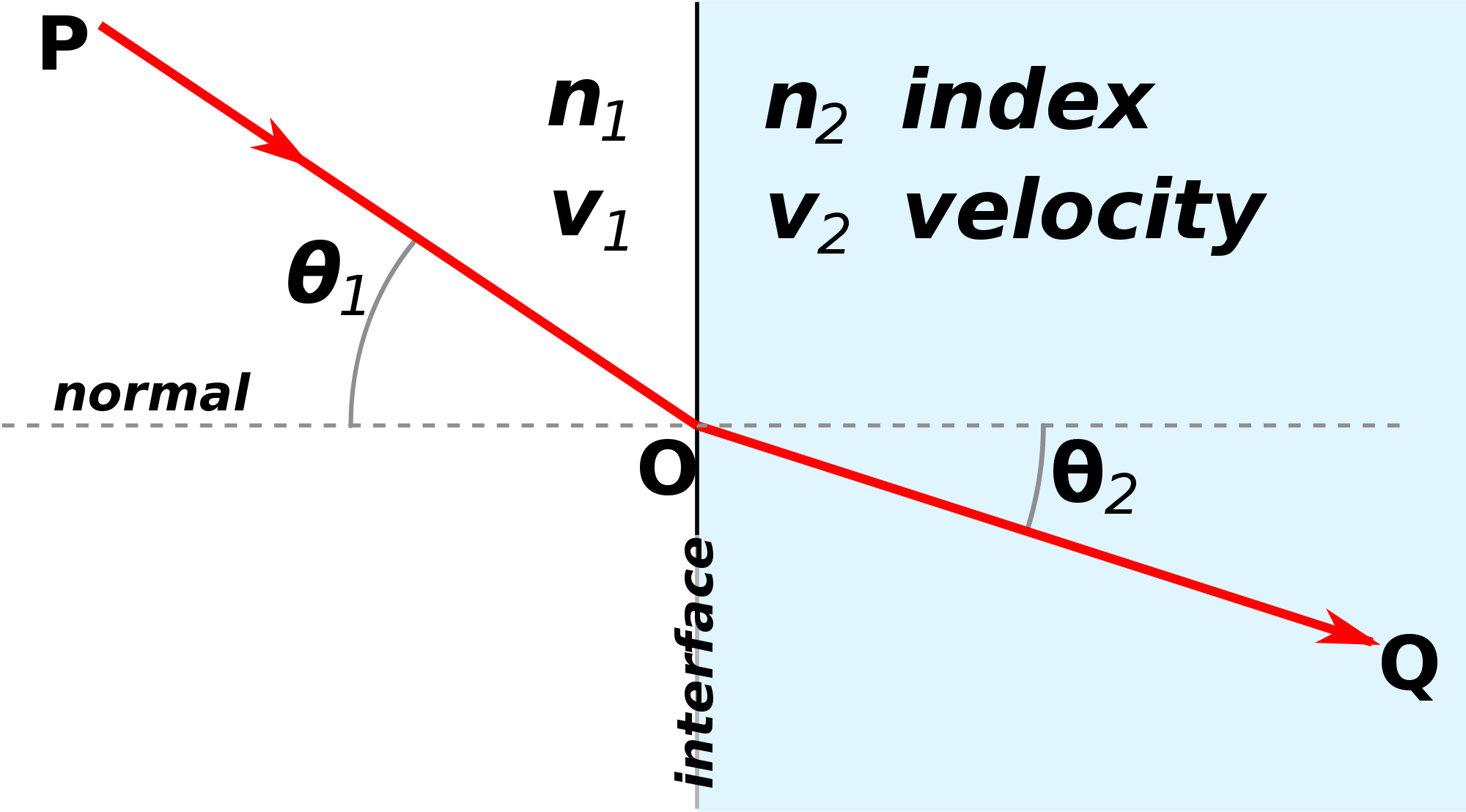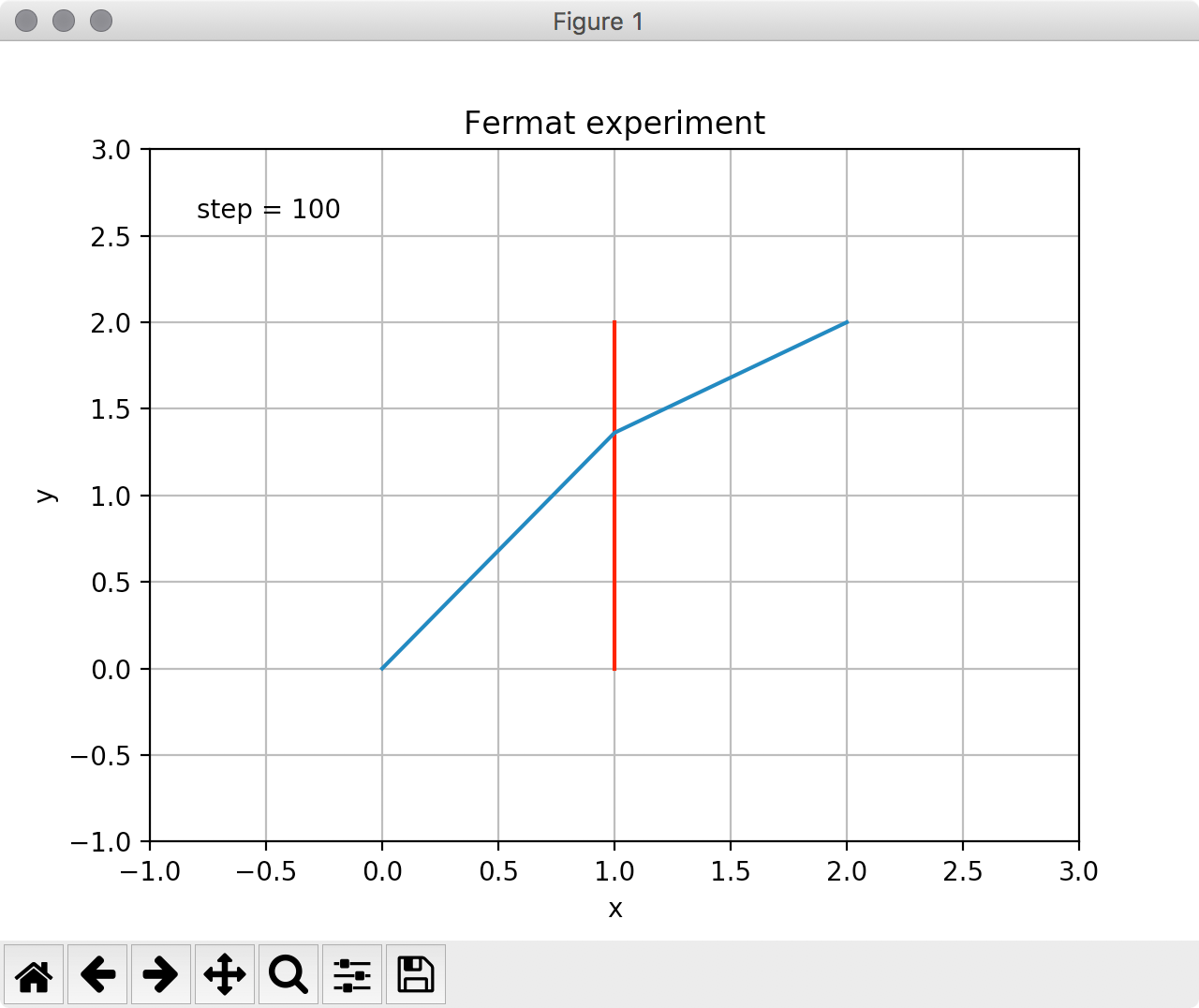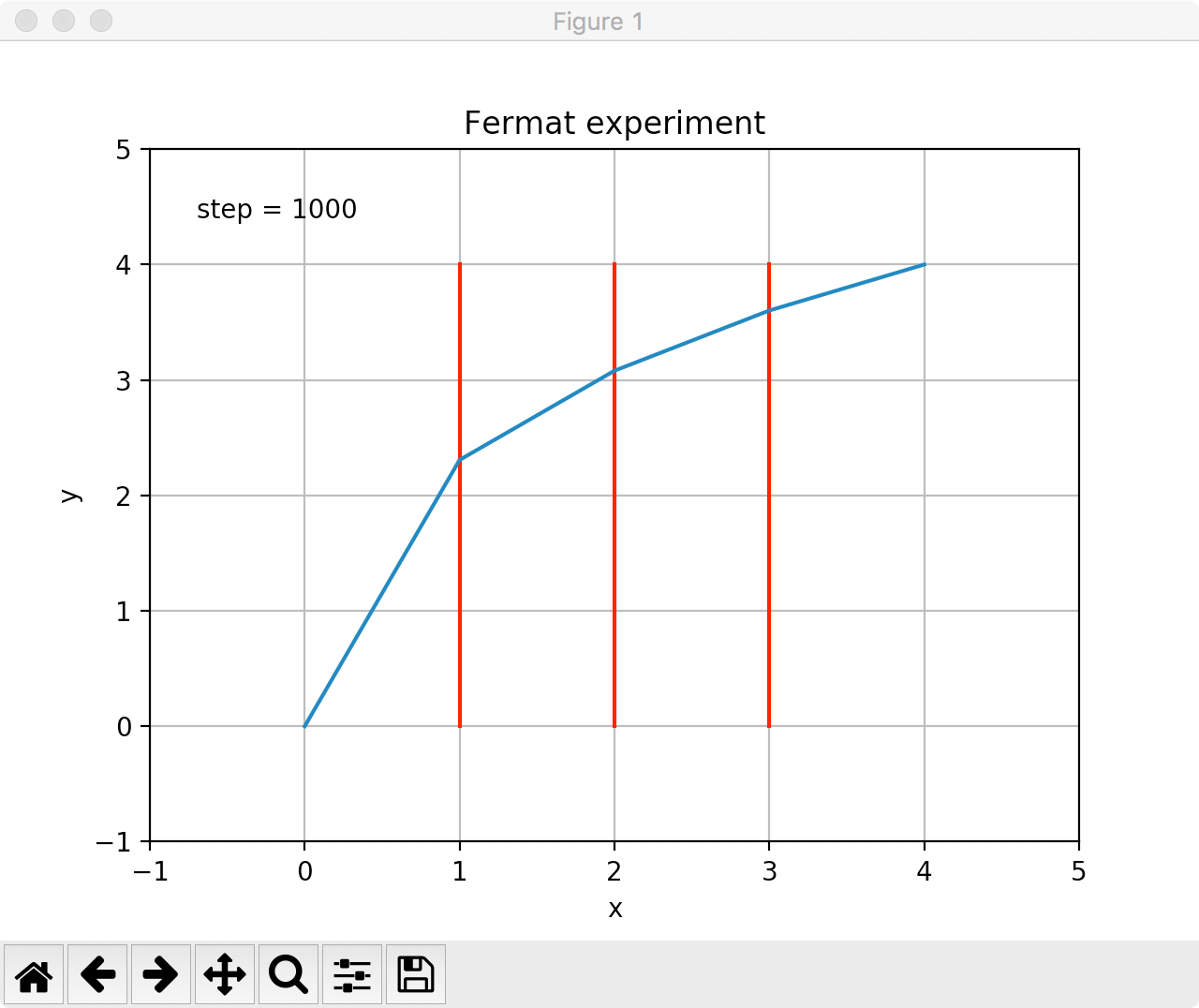
Simulation and Modeling (CSCI 3010U)
Faculty of Science, Ontario Tech University
http://vclab.science.ontariotechu.ca
Discuss in class
The goal of this exercise is to write a program that can compute the path of a ray of light as it passes through materials having different index of refraction.

The figure above illustrates this phenomenon. The ray of light bends as it enters the second medium. It turns out that by bending the ray of light takes the shortest amount of time to travel between point P and Q. The speed of light in a medium with index of refraction \(n\) is given by the following expression \[ v = \frac{c}{n}, \] where \(c\) is the speed of light in vacuum. The speed of light in vacuum is roughly \(1080\) million kilometers per hour.
Using the fact that the ray of light takes the shortest path (in time) when passing through materials having different index of refractions (see the figure below), find the actual path that the ray travels. We assume that the ray of light is initially traveling in vacuum and it exits in vacuum as well.


We will use the following class to set up the layers appropriately.
class Fermat:
def __init__(self, N, dn):
'''
Sets up Fermat simulation -- light ray in media with different
index of refractions
N = number of media layers
dn = change in index of refraction from one region to the next
Layers are set at x-locations: 1, 2, 3, ..., N-1
Starting x-location for the ray is 0
Ending x-location for the ray is N
Starting y-location for the ray is y[0]
Ending y-location for the ray is y[N]
Location of ray at layer i is y[i]
Speed of light before layer i is v[i-1]
'''
self.dn = dn
self.N = N
self.y = np.empty((N+1)) # y coordinate of light ray, index is x coordinate
self.v = np.empty((N)) # light speed of ray for medium starting at index value
self.dy = 0.1 # max change in y at each step
index_of_refraction = 1 # index of refraction for vacuum
self.steps = 0
for i in range(N+1):
self.y[i] = i
for i in range(N):
self.v[i] = 1. / index_of_refraction
index_of_refraction += dnThe above piece of code sets up a material with N layers.
v[0] represents the velocity in vacuum. v[1]
onwards store velocities in different layers. y[0] and
y[N] represent the entry and exit locations of the ray of
light. We are interested in computing y[i] for \(i \in [1, N-1]\).
Starter code is available here.
The exercise will be completed in class. Be prepared to show your work to the instructor.